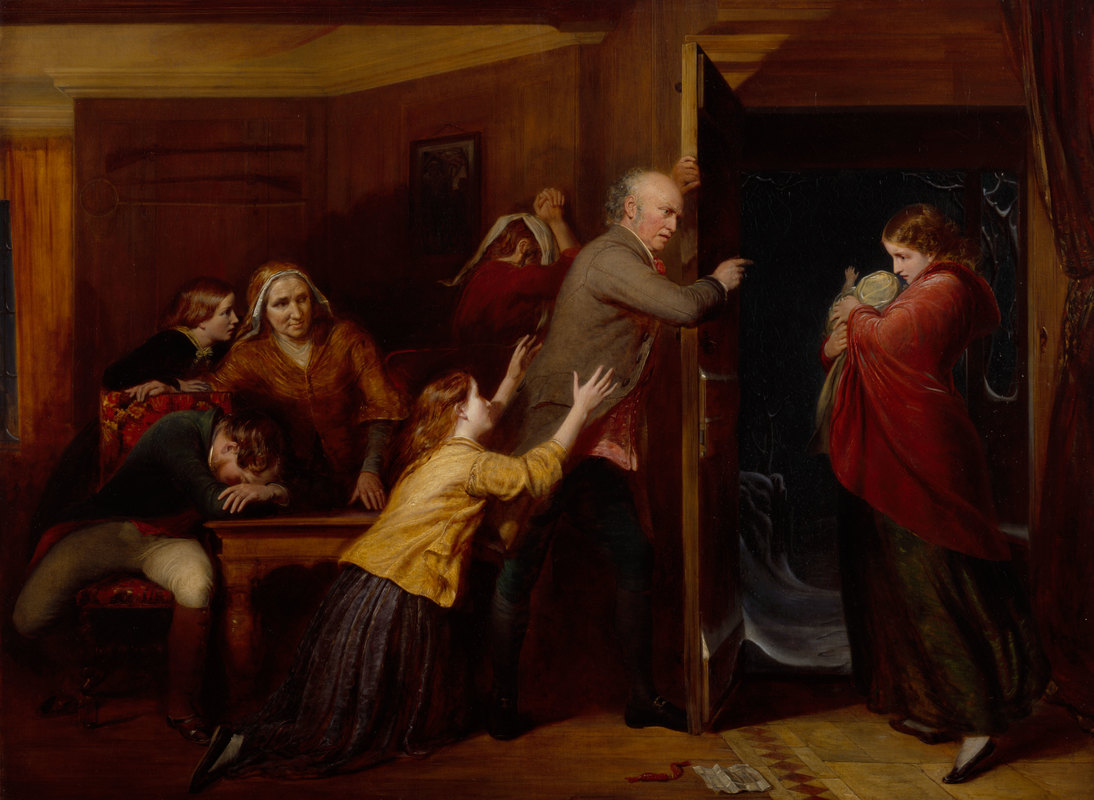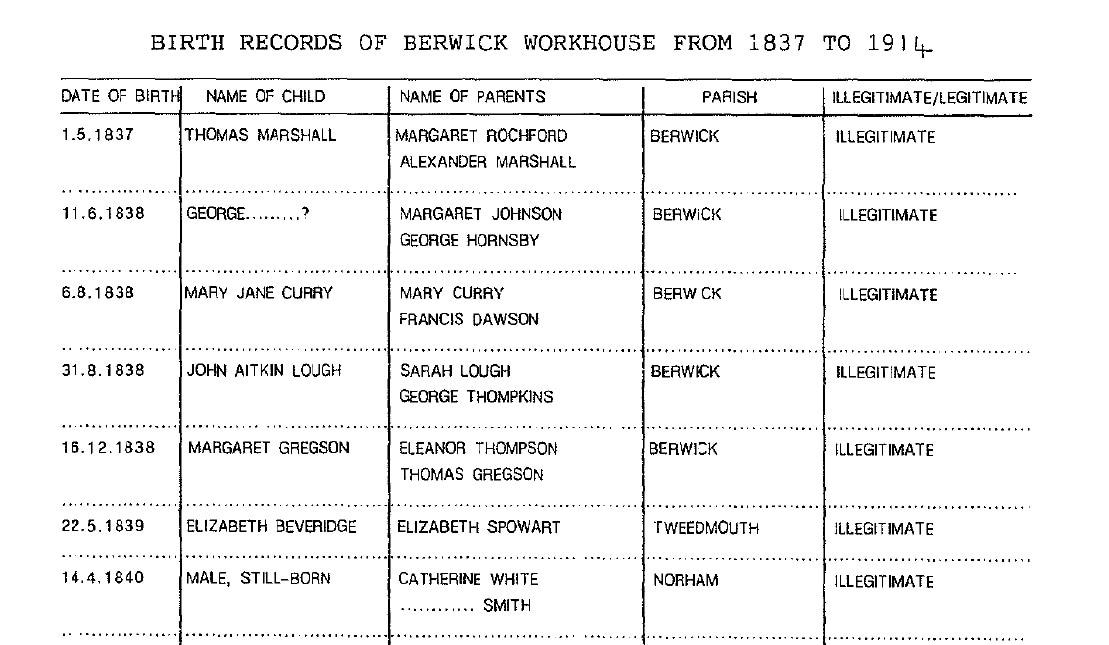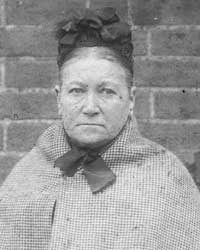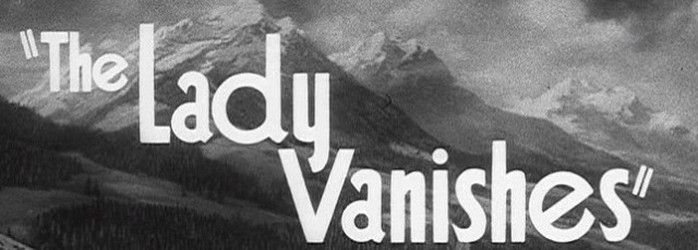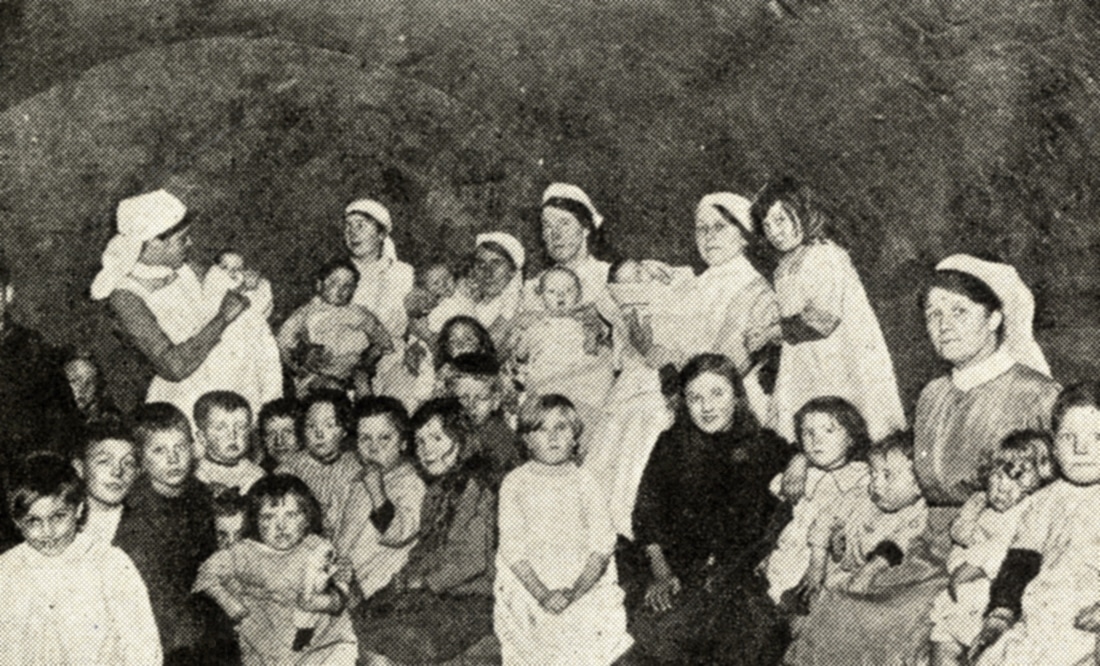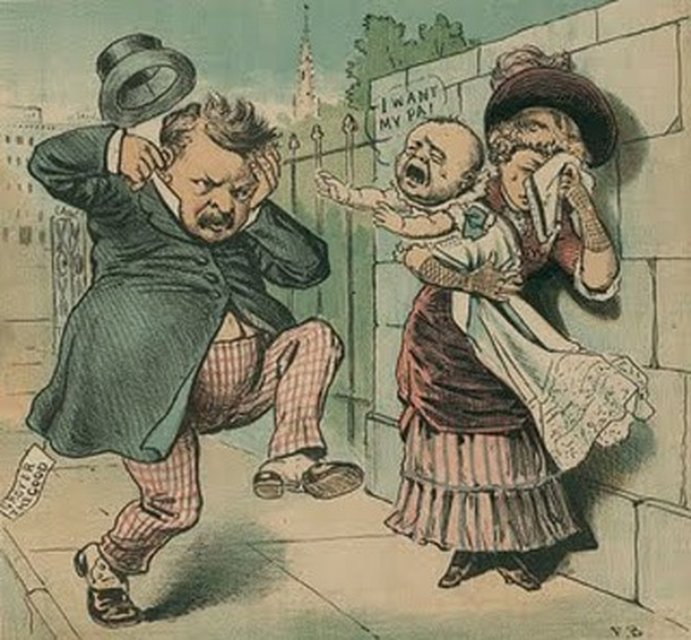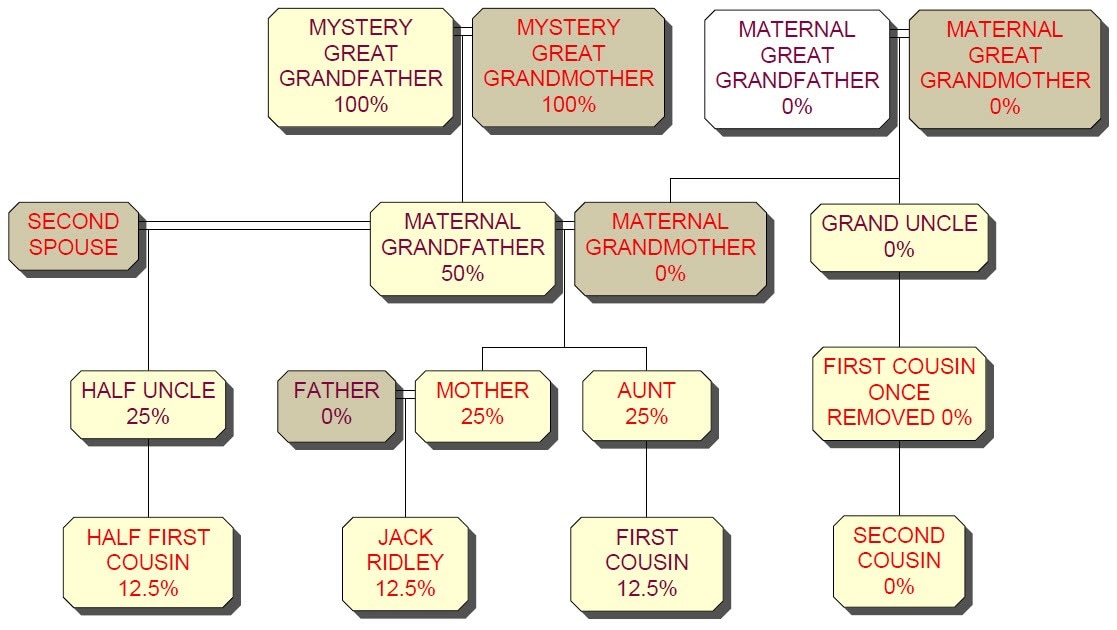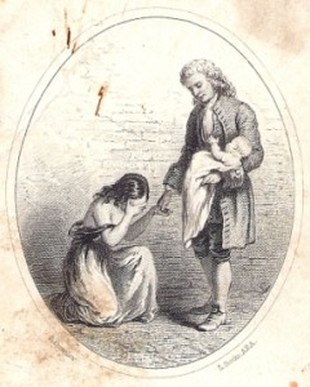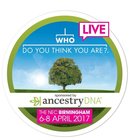|
Family History is littered with brick walls, some higher and wider than others. Many can be overcome with a bit of lateral thinking, albeit in a rather round-about way. Illegitimacy and adoption however, present an obstacle more challenging than most. Historically, illegitimacy was viewed as a potential financial burden on the authorities responsible for the administration of funds to the poor and needy. Prior to the radical changes brought about by the ‘Poor Law’ reforms in 1834, this burden fell upon the Parish to which the individual ‘belonged’ under the terms of various ‘Acts of Settlement’. In simple terms a child took the place of settlement of his father, and an illegitimate child its place of birth. Parishes and Burghs therefore sought to distance themselves from this potential financial burden wherever possible. In early parish baptismal registers, it is not uncommon to find the father’s name given as an acknowledgment of paternity. However, in cases where his name was not forthcoming the courts could exercise their legal right to question the mother in order to pursue the father for maintenance. Hence, under the terms of ‘removal’, illegitimate children may have been born outside the parish that was the last known residence of the mother. As such, cases of illegitimacy often left a handy paper trail, and the records of the civil and ecclesiastical courts where cases of ‘fornication’ abound, can be rich pickings for the researcher. In the Post 1834 period whilst the issue of settlement remained in force, the right of the courts to pursue the father for maintenance did not. The onus for this was passed firmly to the mother. Often left without the means to do so or family to support her, the single mother had little option but to enter the workhouse or abandon her child. The insensitively named ‘Bastardy Laws’ introduced in 1844, later renamed affiliation orders, at least offered the mother some chance of judicial redress. These records can also prove to be useful sources of information. The introduction of civil registration brings its own set of challenges to the researcher as rules governing the validity of the information included on the certificate, and who could legally supply it changed over time. However, perhaps the most challenging aspect of tracing illegitimate ancestors arises when the child was adopted. Although adoption societies began to emerge during the years of WW1, in England there was no legal procedure or registration framework in place until 1927. (The Adoption Index for the period from 1927 is not available anywhere online but can be viewed at the British Library.) Added to this the unavailability of census records after 1911 and subsequent data protection laws, make tracing illegitimate births and adoptions within this period extremely difficult indeed. This was certainly the case for Jack Ridley whose research ground to halt with the discovery that his maternal grandfather John Henderson had been born out of wedlock and adopted shortly afterwards.
John Henderson was born on the 8th July 1914 at 206 Greystone Road, Carlisle which appears to have been some sort of ‘birthing’ establishment run by William Ramsay Findlay and his wife Mary Jane. Before legislation passed in 1908, establishments such as these were largely unregulated and conjure up dark images of Victorian baby farming and other dubious practices. Whilst this does not appear to be the case in this instance, the Findlay's ‘having adopted’ at least two infants themselves, the question remains how the women ‘in trouble‘ came to hear about this establishment and furthermore how they paid for it. John’s mother gave her name as Georgina Henderson and registered the birth herself on the 28th July. Columns 3 and 6 which would normally contain information about the father are blank, indicating that Georgina had not pursued the father for affiliation or maintenance. A photocopy of the original entry of the birth in the Carlisle register which bears her signature has been ordered. Her signature may be useful for future use for matching against other records and may also indicated level of literacy. This is the only means by which the signature of the informant can be obtained as they are not present on the certified copies available from the GRO or Local Register Offices. Where Georgina came from or where she went is a mystery, she simply appears to vanish. The only evidence for her existence at all being John’s birth record. The sense of frustration is evident from Jack’s own summary of events to date: …whilst there are anecdotal stories about the circumstances of John's adoption it struck me as curious that my mother's family had not pursued this further. The name Georgina Henderson is unusual in that, according to the 1911 census, there are at most a dozen possibilities - assuming of course that the information on the birth certificate was correct. Over the past 3 years, I have dissected each and every detail from the certificate. But even now, I treat all information within that document as probable - not definite. Whilst the possible number of women named Georgina Henderson may be relatively small, there would have still have been no means of identifying which of them was actually Jacks maternal great grandmother. The relatively recent developments and accessibility to genetic testing for family history research is now helping researchers like Jack to break down these impenetrable brick walls. Even so, wading through the forest of distant genetic matches in trees that bear no resemblance, or commonality to your own can be a daunting and lengthy process without expert guidance. Top international genetic genealogist Michelle Leonard has been recruited to help solve this mystery and has kindly shared some top tips for others facing similar obstacles. This informative article is available to download and keep for future reference.
DNA Testing For Unknown Ancestor MysteriesBefore affordable DNA testing for genealogical purposes burst onto the scene in recent years many family history mysteries were simply filed away in the unsolvable drawer. DNA testing has opened up a whole new world of possibility for adoptees and those with unknown parentage mysteries and by unknown parentage mysteries I'm not only referring to an unknown parent but perhaps an unknown grandparent or even great grandparent as in the case of Jack Ridley. DNA testing has become the logical next step for those faced with brick walls such as a grandfather's birth certificate with a blank next to the father's name. It is a very powerful tool that can be used to help reconnect biological family members in the here and now as well as unlock secrets from the past whose answers we thought had died with those who kept them. DNA testing is not a magic bullet, however, and can't be used in isolation. Some people will get lucky with a close match that solves their mystery as soon as they test but for most a lot of hard work is on the horizon. I like to think of DNA as another tool in the genealogist's varied toolbox and it needs to be used in conjunction with traditional research to get the best results. Before deciding to test people also must be aware, and make those they are asking to test aware, that surprises are possible. Many test in order to try to solve the riddle of an NPE but for some the act of taking the test itself is what informs them they have an NPE in the first place. NPE stands for non-paternity event although I much prefer to call it "not the parent expected". DNA is scrupulously honest and, while the percentage of people who discover an NPE is small, everyone should be prepared for the possibility they may receive answers they are not expecting. So, like Jack Ridley, you have a recent mystery in your tree and you decide your next step is DNA testing. Which tests are available and which would best help you with your mystery? There are three different types of test on the market today; autosomal DNA tests, Y Chromosome (Y-DNA) tests and Mitochondrial (MtDNA) tests. In recent years autosomal tests have become the most popular but all have their own merits and limitations. Autosomal DNA Tests Autosomal DNA is a mix of the DNA you inherited from all of your ancestral lines but, due to the way it recombines as it is passed down, some DNA from your most distant ancestors drops off each generation. This means autosomal DNA is limited to the past 5-7 generations and is also why testing older generations can be so crucial - they have more of your ancestors’ autosomal DNA than you do. While this filtering out of older DNA is a limitation of autosomal testing, it is also why it can be so useful for recent family history mysteries - you inherit 50% of your autosomal DNA from your mother and 50% from your father so if you were adopted or have a recent unknown ancestor autosomal DNA testing is crucial and should be your first port of call if you want to use DNA to solve your mystery. Y-DNA Tests Only men have a Y-chromosome which is passed down from father to son along a continuous male line and, therefore, Y-DNA tests can only be taken by men. The limitation of a Y-DNA test is that it only tests one of your ancestral lines - your direct paternal line. You have sixteen lines stemming from your great great grandparents and an autosomal test can cover all of these while a Y-DNA test only covers one. The advantages of Y-DNA testing, however, are that the particular line it covers is the line that carries your surname and it can reach much further back in time than autosomal. If your mystery is on a line for which you have a Y-DNA tester (a man who shares the Y-chromosome of the mystery man) I would recommend Y-DNA testing in addition to autosomal DNA testing as there is a chance it could identify a surname. If, for instance, out of your top ten Y-DNA matches seven of them have the surname Campbell, there’s a good chance your mystery man was a Campbell too. This is a huge clue. There is only a 10-15% chance of identifying a surname in this way at the moment but if you don’t test you will never know and that percentage will rise over time as more people enter the database. Unfortunately female adoptees and females with unknown fathers cannot utilise Y-DNA testing but don’t think Y-DNA is only useful for your direct paternal line as it can help you with any mystery male ancestor so long as you can find an appropriate Y-DNA tester for that line. Mitochondrial DNA Tests Mitochondrial DNA, like Y-DNA, also only covers one line of your tree - this time the direct female line. There is, however, no gender limitation on who can take this test as both males and females inherit mitochondrial DNA from their mothers (males just don’t pass it on). The main difference with an MtDNA test is the fact that a direct female line you can test usually changes surname every generation due to marriage and as such this test cannot give clues that point to a particular surname in the way a Y-DNA test might. MtDNA testing tends to be most useful when examining a hypothesis and, due to how slowly it mutates, is usually the least genealogically useful of the three tests - you can have an exact MtDNA match that is many hundreds of years back in time. It is certainly worth considering though if your mystery is on a direct female line you can test or you are an adoptee as it can be useful to cross-reference your MtDNA haplogroup with close autosomal matches if they have also tested their MtDNA. Testing Companies The three main companies offering DNA testing for genealogy now are AncestryDNA, FamilyTreeDNA and 23andMe. AncestryDNA only offer autosomal testing while FamilyTreeDNA is the only company that offers Y-DNA and MtDNA matching databases as well as an autosomal one. FamilyTreeDNA have also recently re-introduced autosomal transfers making it free to transfer into their autosomal database and only $19 to unlock their ethnicity estimate and tools such as their chromosome browser. Be aware that due to differences in the testing chips between Ancestry and FamilyTreeDNA you will see much fewer matches than if you tested with them on a standalone basis but if you transfer you are eligible for a reduced price FamilyTreeDNA kit if you wish to re-test there to gain all of the lower level matches they may have to offer. 23andMe offer an autosomal test which also gives you basic Y-DNA (male testers only) and MtDNA haplogroup information as well as certain health reports. As 23andMe have a focus on health many people test there solely for the health information and not for genealogy purposes. It is more expensive than the other two and unfortunately they offer an Ancestry-only test at a much cheaper price in the US but not internationally. Two new players have also recently entered the marketplace; MyHeritage and Living DNA. MyHeritage has just started selling their own kits so it will be some time before they are a major player but in time they will have a unique database that those seeking to solve a mystery shouldn't ignore. For now, though, it is possible to upload your raw data to MyHeritage for free if you have tested elsewhere. Living DNA is a new UK-based company and their test includes Y-DNA (male testers only) and MtDNA information as well as a regional breakdown of your ethnicity. Be aware that they don't currently have a matching database although one has been promised in the near future. All of the different testing companies have their own pros and cons but when you are testing to solve a mystery you have to think in terms of getting into the largest databases as the larger the database the more chance you have of hitting upon a close enough match to aid your search. Entry to a matching database showing all of the other people who have tested with whom you share DNA is the most crucial thing you receive with your results. You also get an ethnicity estimate from an autosomal test and haplogroup assignments from Y-DNA and MtDNA tests but while ethnicity estimates and haplogroups can be useful when dealing with unknown parentage, you will really want to concentrate on these matching databases as the key to solving your mystery. My top recommendation for those with an adoption or unknown parentage mystery is to get themselves into as many of the major autosomal databases as they can afford to. It's like going on a fishing trip and not knowing which pond your big fish might be swimming in; if you are in them all then you won't miss out on landing your personal big fish. AncestryDNA has by far the largest database now having hit over 3 million testers so I recommend testing there first then transferring into FamilyTreeDNA for your top matches in their database (remembering if you want all the matches available you will have to upgrade your test). I also highly recommend uploading your DNA to GEDmatch as soon as you receive your AncestryDNA results. GEDmatch is a fantastic and free volunteer-run website that allows matching between those who have tested at all the major companies and also, in my opinion, offers the best tools for working with your DNA. I find it invaluabe in my work. Finally 23andMe also have a large database so if your mystery is no closer to being solved after testing at AncestryDNA and uploading to FamilyTreeDNA, GEDmatch and MyHeritage then I would encourage you to also test at 23andMe in order to have complete coverage of the databases on offer. When your results arrive check your match list and start working with your highest matches first. You want to find or compile family trees for these matches. In many cases this will require contacting people and hoping they will be willing to help. This can be daunting and there may well be disappointments and frustrations if close matches don't respond. Try not to get discouraged. Take screenshots of the trees of all close matches in case they decide to make them private at some point and you lose that information. If you don’t have a tree of your own to compare to the trees of your matches, the most important thing you can do is identify other people on your list that also match your highest matches and see if you can work out how they match each other! The line on which they match each other is almost certainly the line they match you on. If you can narrow their connection down to a particular ancestor or ancestral couple it’s likely they are also your ancestors or their parents or grandparents are. The generational level for the common ancestors depends on the amount of DNA you share with the matches. You need to familiarise yourself with the amounts of DNA different cousin relationships should share with each other; consult the Shared cM Project and ISOGG’s autosomal DNA statistics page. Once you are sure you’ve identified a common ancestor or ancestral couple you need to build their line forward to identify potential grandparents, parents etc via age and location. Then comes the really tricky part – asking people on the line you think may contain your close relatives to test. You need to think carefully about how to initiate this contact and have a support network on hand. It’s important to understand that how successful you will be is totally dependent on whether or not close enough relatives have tested yet - by close enough I don't mean a parent or a sibling, which of course is the jackpot for an unknown parent mystery, but a first, second or third cousin match. Some will find they don’t have close enough matches to begin with but more and more people are testing on a daily basis and match lists are constantly updating so closer matches can come along at any point. Jack Ridley’s Mystery; who should he test? Here's a hypothetical family tree for a situation like Jack’s: *Percentages: these demonstrate the amount of DNA each person shares with ONE of the mystery great grandparents e.g. the mystery great grandparents themselves have 100% of their own DNA and each passed 50% of that down to their son. Their great grandson Jack inherited around 12.5% from each of them. The 25% and 12.5% percentages are approximate; DNA is not passed down in in such exact amounts outside of parent/child relationships (e.g. you could get 23% from one grandparent and 27% from the other but overall these numbers are a reasonable guide). With a case like this we're not looking for extremely close matches – we need first cousins1xrem or more likely second or third cousins (full, half or removed) as those are the closest matches that could descend from the mystery great grandparents. We can see from the chart that Jack shares approximately 12.5% with each of his mystery great grandparents so that means that around 25% of his DNA came from them combined. So far only Jack has tested meaning the combined 25% of their DNA that he has inherited from them himself is all he has to work with and, since 75% of his DNA does not pertain to them, a large number of his matches won’t be relevant to identifying who they were. His matches will be a mix of people related to him on all of his lines. Think of his tree in terms of quarters – there’s the paternal grandfather’s quarter, the paternal grandmother’s quarter, the maternal grandfather’s quarter and the maternal grandmother’s quarter. In this situation we want to eliminate the matches from the three other quarters that he already knows about in order to pinpoint the ones from the mystery quarter he doesn’t. How do we go about that though? Well firstly we have to identify as many matches as we can on the other three quarters! The more DNA that can be attributed to them the easier it will be to assign matches to the mystery quarter. This can be done by identifying matches who have already tested but by far the easiest way to do it is to proactively test other close relatives yourself.
Mother/Aunt/Half Uncle: Since he does not have his maternal grandfather to test his mother and her siblings are his next best testers as they all received double the amount of DNA he did from the mystery great grandparents. They inherited around 25% from each of them meaning 50% of their DNA is relevant to the mystery. He should aim to test them all if possible as this will give him much more of the mystery great grandparents’ DNA to work with and the more of their DNA he has to work with, the better chance he has of obtaining matches that could help solve the mystery. Testing his half uncle in particular should be a priority; testing a half-sibling on the right side in a mystery situation like this is even better than testing a full sibling! Half-siblings share around 25% with each other as opposed to 50% for full siblings but in this situation all of the DNA the half uncle shares with Jack, his mother or his aunt will have come from his maternal grandfather and therefore directly from the mystery great grandparents. Testing a full maternal aunt/uncle is also very useful as it will give him more DNA to work with but it won’t narrow matches down specifically to his mystery line as any matches he shares with his aunt could also stem from his maternal grandmother’s line. He may not have his mother or her siblings to test either though and, in that case, he should move down to his first cousins and half first cousins. Again all the DNA he shares with his half first cousins came directly from the mystery couple. Father: if he doesn’t have his mother to test then in terms of narrowing down his own matches his father is one of the most important people to be tested if possible. He is unrelated to the mystery grandparents but 50% of Jack comes from his father and by testing him all the matches he has received that are on his paternal side can be eliminated in one go. This is very simple to do once his father’s results enter the system; he can just check his match list against his father’s and anyone who matches his father can be eliminated from the search. Those that don’t match his father will be maternal matches that could either be on his mystery line or his maternal grandmother’s line but at least using his father’s results he will have narrowed them down that far. If he doesn’t have his father to test other close paternal relatives such as paternal aunts, uncles or first cousins can still narrow many of his matches down in this way. Maternal Grandmother: you might think testing those on his maternal grandmother's side who share 0% with the mystery ancestors won't help but you’d be wrong! If Jack was lucky enough to have his maternal grandmother herself to test he could eliminate all matches that stem from her and that would help enormously with pinpointing those who stem from the mystery side especially if he also had his father tested too. If he doesn’t have her to test he can still eliminate many of these matches by testing her siblings (his grand aunts/uncles) or their children (first cousins1xrem) or grandchildren (second cousins). Note that as he’ll share less DNA with each successive generation the number of matches he’ll be able to eliminate by testing them will decrease accordingly too. I liken DNA testing for genealogy mysteries to trying to complete a giant jigsaw puzzle - the more important pieces you can place on the board yourself, the easier it will be to identify other key pieces and build the jigsaw. Finally educating yourself about DNA testing for genealogy is of great importance. There are so many helpful blogs, books and groups out there; try to take advantage of them all. If you're confused about something seek out some answers! The ISOGG wiki is a fabulous resource you should become familiar with. I recommend reading all of the excellent information outlined at DNAAdoption.com as well; although set up to cater to the adoption community the advice there can help anyone with a mystery to solve. There are some excellent books too - Blaine Bettinger's new book "The Family Tree Guide to DNA Testing and Genetic Genealogy" is a superb overview on the subject and if you’d like to try out some practical exercises try his new workbook “Genetic Genealogy In Practice”. If you would like to read about a successful adoption search I can highly recommend Richard Hill’s book “Finding Family: My Search for Roots and the Secrets in My DNA”. If you use Facebook I recommend following the DNA Detectives and ISOGG groups. The most important thing to do is just to work with your DNA matches as practising is the very best way to become more familiar with the whole process. It can be a rollercoaster ride of emotions so be prepared, be patient and don’t give up. Conclusion I am extremely grateful to Michelle Leonard for providing such an indepth and comprehensive guide to using DNA in Ancestral research. 'Who Do You Think You Are' Live are hosting three days of Talks and Workshops sponsored by Family Tree DNA at the Birmingham NEC from 6-8th April, and are free to attend. www.whodoyouthinkyouarelive.com/workshop-timetable-dna. Michelle is hosting her own workshop about autosomal DNA for family tree research on Saturday at 11.15 am. All you need now are your tickets to the show which are available at a discount - just click the image below: Alternatively have a go at **Winning** a pair of tickets by answering a simple question at www.bordersancestry.co.uk/wdytya-competition.html You can contact Michelle by email and you can follow her on social media. You can catch her on Twitter as @GenealogyLass and her business page on Facebook is Genes & Genealogy. She is on hand most weeks to answer #DNA queries during the #AncestryHour live chats each Tuesday evening 7-8pm GMT so feel free to join us sometime soon. Remember you can download the text only version of Michelle's article to keep handy for future reference!
3 Comments
|
AuthorSusie Douglas Archives
August 2022
Categories |
||||||||||||||||
Copyright © 2013 Borders Ancestry
Borders Ancestry is registered with the Information Commissioner's Office No ZA226102 https://ico.org.uk. Read our Privacy Policy
